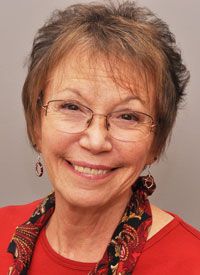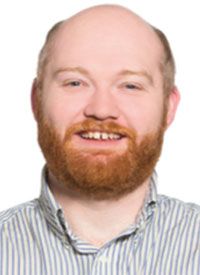The Moving Parts of a Village
Supporting patients and families with a truly holistic and healing approach.
“Penny

Penny Daugherty, RN, MS, OCN
We, as collaborative navigators, became the village that helped a patient and her family. The story started calmly enough. As the gyn/onc nurse navigator, I was alerted to the needs of a woman we will refer to as Alice (who, upon the unfolding of her story did, indeed, seem to have stepped through a looking glass). It appeared that Alice was in need of a generous measure of psychosocial support as she began her treatment for ovarian cancer.
I established a relationship with Alice and her daughter Irene (pseudonym) while she was an inpatient and then followed her as her adjuvant chemotherapy was initiated. I visited with Alice and Irene each chemotherapy cycle, and we easily bonded in conversation. They both also came to our LIFT (Ladies in the Fight Together) monthly support group where they bonded with the other women. Our then American Cancer Society navigator, Erin Elliott, was able to get Alice a lovely wig which she enjoyed wearing.
Alice also fit the qualifications for our CCL (Cancer Care Liaison) program (aged ≥65 years, with Medicare parts A and B), and thus Jace Longnecker became part of the team as her designated CCL. Jace was able to support Alice in many ways, including finding a source for gas cards for her to make it easier for her to get to treatment.
One morning Jace called me to say that in his extensive conversations with Alice, she had revealed to him that she had her microwave stuffed with hot dogs. This alerted the ever-vigilant Jace to what appeared to be significantly aberrant behavior, so he called me and I, in turn, made a referral to our behavioral health department. After interviewing the patient, they determined that there was evidence of psychological hoarding behavior which I reported to her gynecologic oncologist and his team.
“Jace

Jace Longnecker, BA, MBA, CCL
During one of Jace’s CCL weekly follow-up calls, Alice reluctantly shared that she had become dizzy while working in her garden, fallen, and now had a significant infected facial bruise. She was having chemo- therapy at that time and was reticent to call her doctor, so Jace took the initiative and reported the situation to her gynecologic oncologist who immediately placed her on antibiotics and adjusted her chemotherapy cycles accordingly. Jace also touched base with me, so I could call the patient and remind her she could call me with any clinical issues that came up.
Our patient was subsequently readmitted to the hospital for an infection in her leg, and I visited with her and Irene who was with her mother daily, as did Kourtney Carter, our then navigation social worker.
One afternoon when Irene was leaving for the day, she, Kourtney, and I began to chat, and Irene began describing her childhood, and she tearfully recounted that her mother had been extremely emotionally distant to her and her siblings to the point of withholding food. She said she had become severely anemic at one point. Irene said none of her siblings were interested in helping with her mother’s care but that she, as a born-again Christian, was compelled by her faith to be present for her mother.
This was apparently an extremely cathartic moment for Irene, and Kourtney and I supported her emotionally as she wept for several minutes. She later shared with us that this was the first time in her life she felt totally safe to express her feelings about her mother.
Jace and our behavioral health department were informed and were better able to support our patient and her daughter going forward. I also shared this new information with the patient’s medical team.
Looking back, the care of this patient and her daughter was incredibly enhanced by those of us who collaborated in her care—each of us bringing our own unique skills to the table and sharing with each other so that we actually synergized each other’s efforts. Our individual contributions to her care created a safe and therapeutic environment—not only for Alice, but also for her daughter, who needed ongoing support in her caregiver role.
To me, this showcases our unique navigation program at Northside Hospital Cancer Institute where we are able to support our patients and their families with a truly holistic and healing approach. Many times when patients and families are catapulted into a cancer diagnosis, the complexities of care can send them into a seemingly parallel universe where they feel overwhelmed with emotions that heretofore had been tamped down in the hustle and bustle of everyday life.
As navigators, whether clinical (as in oncology nurse navigators), or logistical (as in the supportive care cancer care liaisons), we have an opportunity to give our patients a sustaining framework to regain a sense of self and purpose in their lives as they proceed through the maze of cancer treatment. This blended and collaborative care model is the foundation of patient navigation in cancer care.

Innovative Program Reduces Nurse Turnover and Fosters Development
Published: September 12th 2024 | Updated: September 12th 2024The US Oncology Network (The Network) has developed one of the most comprehensive programs in the nation to support the professional development and retention of new oncology nurses.


